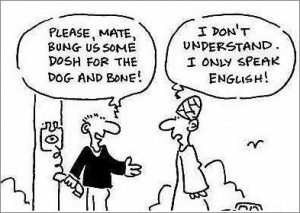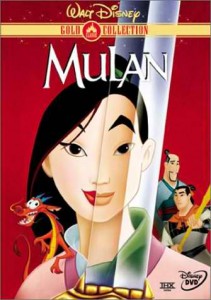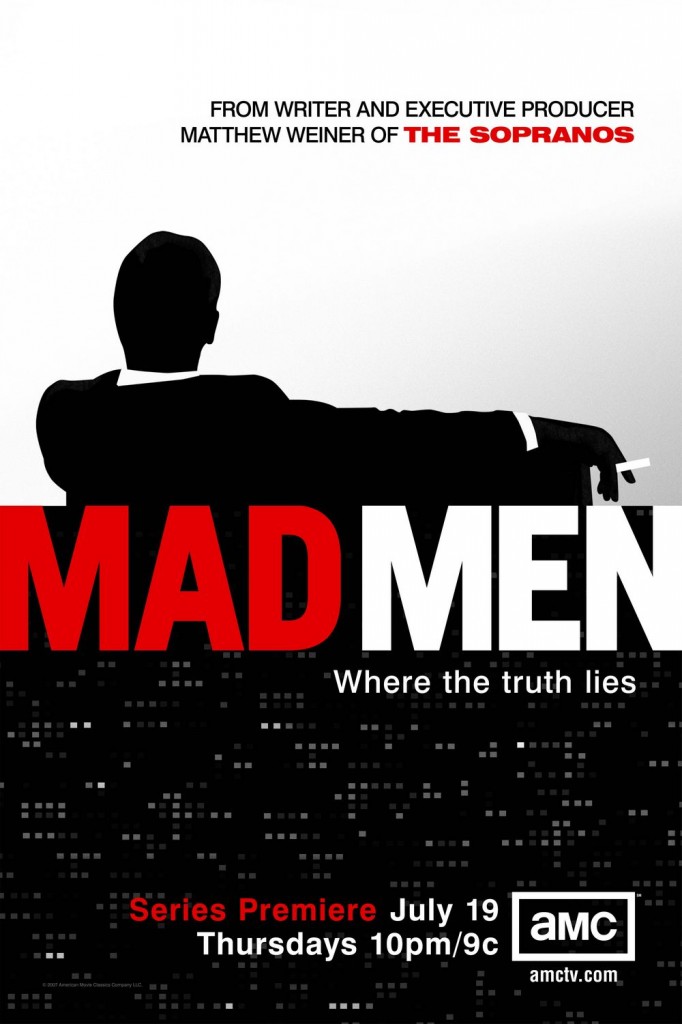Sunday, April 20, 2014 8:06 pm
The basic principle behind Deborah Tannen’s Genderlect Styles is that “male-female conversation is cross-cultural communication” (435). Genderelect Styles attempts to explain why miscommunication occurs between men and women and why they usually talk past each other. Tanner argues that men and women have different conversation styles and the failure to acknowledge this is what gets us in trouble. Tanner explains that masculine and feminine communication styles reflect two distinct cultural dialects rather than inferior or superior ways of talking (436). Tanner clarifies that women seek human connection and this is reflected in their communication style (rapport talk), while men are mostly concerned with status and with maintaining their independence (report talk). A perfect example to illustrate the Genderelect theory is the musical film “Grease.” Danny Zuco (John Travolta) and Sandy Olsoon (Olivia Newton-Jon) met in the summer and fell in love. Once Danny and Sandy are back in school we can see the employment of their rapport vs. report talk when they both describe their summer fling to their friends. Danny’s recount of the story makes him look like a “player,” which adds to his bad boy reputation in school. While, Sandy’s recount of the story emphasizes the connection and love between them.
Grease Clip- Summer Nights
Sunday, April 20, 2014 7:27 pm
Gerry Philipsen’s Speech Codes Theory attempts to answer questions regarding the “existence of speech codes, their substance, the way they can be discovered, and their force upon people within a culture” (422). Philipsen’s Speech Code Theory is made up of the following six general propositions: 1) Every unique culture possesses a unique speech code, 2) Multiple speech codes are used in any given speech community, 3) A speech code requires a culturally unique psychology, sociology and rhetoric, 4) The importance of speaking is contingent on the speech codes employed by listeners and speakers to generate and interpret their communication, 5) The terms, rules and premises of a speech code are inseparably interlaced with speaking itself, 6) The crafty use of a common speech code is an enough condition for predicting, justifying and monitoring the form of discourse about the lucidness, carefulness and ethics of the communication conduct. Philipsen’s Speech Code Theory made me reflect on the speech code among my circle of friends and acquaintances back in Ecuador. I was reminded of this speech code when I saw my little sister and her Ecuadorian friend during Easter break; both girls were constantly switching back and forth between Spanish and English in the course of their conversation. This reminded me of the prominent bilingual speech code employed by my friends and acquaintances during conversation in Ecuador. The switching back and forth between two languages by bilinguals is called “code-switching” and is a very common language tool that allows bilinguals to place emphasis on a certain point, reinforce a request, substitute a word or express a concept that does not have a direct meaning in one of the languages.
Sunday, April 20, 2014 7:11 pm
Gerry Philipsen’s Speech Codes Theory deals with how different people use speech codes, which he defines as “a historically enacted, socially constructed system of terms, meanings, and rules pertaining to communicative conduct.” One main characteristic of speech code is the importance of metacommunicaiton or talk about talk. Speech codes theory is captured in six general propositions: 1. Wherever there is distinctive culture, there is a distinctive speech code; 2. In any give speech community, multiple speech codes are deployed; 3. A speech code involves a culturally distinctive, psychology, sociology, and rhetoric; 4. The significance of speaking depends on the speech codes used by speakers and listeners to create and interpret their communication; 5. The terms, rules, and premises of a speech code are inextricably woven into speaking itself; 6. The artful use of a shared speech code is a sufficient condition for predicting, explaining, and controlling the form of discourse about the intelligibility, prudence, and morality of communication conduct. This idea of speech codes made me think of the movie Greece. Where John Travolta’s character has very different speech codes with his “greaser” friends using certain words and slang only they understand with each other, and acts a certain way to fit in with his crowd. However, in his past summer love that premises the movie he abandoned those speech codes in order to connect with a girl who was not from the same part of town or background, so they find difficulty when their worlds clash at the end of the summer. I believe the following scene and movie in general highlights the cultural distinctiveness of speech codes as well as the fact that in every speech community, multiple speech codes are used.
http://www.youtube.com/watch?v=ZS9SXH3DfT8
Sunday, April 20, 2014 12:48 am
Speech Codes Theory, coined by Gerry Philipsen, is “a historically enacted, socially, constructed system of terms, meanings, premises, and rules pertaining to communicative conduct” (421). Speech codes vary from culture to culture, work place to work place, and even within different social groups. One of the proposition even states that within a speech community there can be multiple speech codes. Most unique with the speech code theory is that “the terms, rules, and premises of a speech code are inextricably woven into speaking itself” (427). This means there are no written or recorded rules that tells a person what to say in a certain speech code. One just learns how to speak it through listening to it. The Speech Codes Theory makes me think of the differences in dialect of people from the north and people from the South. I am from Delaware, so I am not too northern, but much more northern than North Carolina. When I first got to Wake and met southern people, I had to use context clues in order to figure out what certain words or phrases meant. But, by listening, I now understand a lot of southern speech code, as well as my speech code from home. There was a quiz in the New York Times that can actually pin point where you are from based on the words and phrases you choose to use in your speech. This, initself, is proof of speech codes. I attached the link to the quiz below.
New York Times Quiz
Sunday, April 20, 2014 12:22 am
Deborah Tannen believes that men and women “speak different words from different worlds” and are “tuned to different frequencies” (437). This belief leads to her using the term “genderlect” in order to describe that the styles of communication by men and women is better viewed as two different cultural dialects. Women have rapport talk while men have report talk. Rapport talk simply means that when women speak they seek to establish connection with others. Report talk, usually by men, is when they seek to command attention or win an argument. The attached scene from She’s the Man proves Tannen’s idea of report talk in males. Sebastian, who is actually a girl pretending to be a guy, gets his guy friends to like and respect him by getting their attention while he interacts with girls. Sebastian talks to each of the girls in a sexual way and tells each of them off, showing that he won and had power over the girls. The guys watching him think he is “such a man” because of this. Sebastians use of report talk has done exactly what it was meant to do, making him popular with the guys. Girls would never be caught doing this type of thing to get other girls to like them.
She\’s the Man clip
Saturday, April 19, 2014 11:35 pm
Speech Code Theory in communications is a system of socially constructed symbols and meanings, and rules that combine both culture and communication. This is mostly studied through ethnography and has six different propositions of speech code. The first states that wherever there is culture there is also a specific speech code. The second states that in any specific speech community, there are many speech codes. The third articulates that any speech code includes specific cultural psychology, sociology, and rhetoric. The fourth says that a speech is considered important if the speakers and listeners involve see it as such. The fifth states that speech includes premises and the rules of a speech code. The final proposition states that specific speech codes guides how we discuss communication. This theory is illustrated through this cartoon. In the cartoon one man is speaking in slang that the other man does not understand. This reflects the second proposition which states that in any speech community, there are many speech codes. It also affects how these men can communicate with each other which reflects the sixth proposition.

Saturday, April 19, 2014 11:33 pm
Male-female communication is cross-cultural in communication style. The male-female styles of discussion are seen more as two separate cultural dialects rather than as one being superior to the other. There are many different examples of what men and women, generally, do different in conversation. Men tend to report talk which emphasizes status and independence while women use rapport with the goal of seeking human connection. Men talk more in public while women talk more in private. Men tell more stories than women and talk about themselves more. Women tend to listen and ask questions while men usually listen and do not ask questions. An example of this is shown strongly in Mulan. In Mulan, The male soldiers are talking about how it would benefit them to go to war so that they can be considered great warriors and get status. Mulan, on the other hand, was trying to protect her family (valued human connections). When talking about the expectations of a woman, the men were talking publicly, while Mulan only responded when spoken to.

Saturday, April 19, 2014 7:45 pm
The communication between male and female iscross-cultural. Miscommunication between men and women is both common and insidious because the parties usually don’t realize that the encounters are cross-cultural. The term genderlect suggests that masculine and feminine styles of discourse are best viewed as two distinct cultural dialects rather than as inferior or superior ways of speaking and the theorydoes not believe that men and women seek only status and connection, respectively, but these are their primary goals. In Mad Men, the relationship between Don and his wife demonstrates this theory pretty well. They theory says that women talk more than men in private conversations and in the public arena, men vie for ascendancy and speak much more than women. In the show, we can find out that Don’s wife never seem to talk a lot in the public, every conversation was initiated and conducted by Don. However, when they go home, Don’s wife tends to express her feeling in relatively private place, and most of the conversation was initiated by her instead of Don. Also, the theory talks about men don’t ask for help because it exposes their ignorance. What we find out in the show is that, Don never ask for help from anybody. For every case he has, he tends to solve by himself.

Saturday, April 19, 2014 7:30 pm
In order to understand the speech codes theory, we first have to know the six propositions of the distinctiveness of speech codes. I think the first three of them are highly related to my real life. These three propositions are wherever there is a distinctive culture, there is to be found a distinctive speech code; In any given speech community, multiple speech codes are deployed; A speech code involves a culturally distinct psychology, sociology, and rhetoric; I think these three propositions appropriately reveal the communication differences among different countries and different parts within a country. What’s more, they also demonstrate the relationship between culture and communication. The example I could think of is the difference between Chinese and English. In China’s history, food culture is a very important part, which has continued into today. Therefore, eating has a significant role in Chinese people’s daily life. Because of the influence of the important food culture in china, people sometimes use “Have you had your meal?” as a greeting. Here I attached the link of a very famous series of food documentaries – a bite of China.
https://www.youtube.com/watch?v=PCgYUKPNCug
Saturday, April 19, 2014 7:15 pm
Genderlect is a term suggesting that masculine and feminine styles of discourse are best viewed as two distinct cultural dialects. The main point of this theory is that women desire for connections while men desire for status. In order to demonstrate this difference between men and women, we can find five social phenomena, which are related speaking pattern, storytelling, listening, question asking, and conflict. The one I really want to talk about is the difference in speaking pattern among men and women. According to the communication book, Women talk more than men in private conversations. However, in the public arena, men vie for ascendancy and speak much more than women. This reminds me of an experiment I have read before. The experimenter asked a group of boys and a group of girls to walk through a path which contains a barrier inside. The result shows that most boys prefer to try to move away the barrier by themselves, while most girls prefer to ask for help. This result demonstrates the difference in communication preferences between males and females. Below is the link of another similar experiments.
http://abcnews.go.com/2020/story?id=123726





